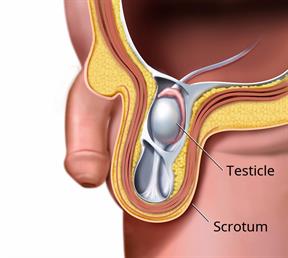ThisisPatientEngagementcontent
Undescended Testicle
Learn more about our Patient Engagement products now! Turn your patients into active participants in their healthcare by giving them easy access to the same evidence-based information you trust – but delivered in an easy-to-understand format.

An undescended testicle is when one or both of the testicles are not found in the scrotum. It's also called cryptorchidism.
Before birth, testicles form inside a baby's belly. Then, they move through a space between the groin muscles (inguinal canal) into the scrotum. But sometimes, the testicles don't move down from the belly or only move down part of the way.
In most cases, undescended testicles will move down within the first 6 months after birth. If they don't, they need to be treated.
Treatment should be done before the body starts to make sperm. It can help lower the chance of cancer and problems making sperm. Often, it's done when a child is between 6 and 12 months of age.
The main symptom is not feeling or seeing a testicle where it should be.
An undescended testicle is diagnosed with an exam. During the exam, a health care provider checks to see if the testicle is still in the belly.
If the testicle isn't felt during the exam, a procedure called a laparoscopy may be done.This information is not intended to replace advice given to you by your health care provider. Make sure you discuss any questions you have with your health care provider.
Cookies are used by this site. To decline or learn more, visit our cookie notice.
Copyright © 2025 Elsevier, its licensors, and contributors. All rights are reserved, including those for text and data mining, AI training, and similar technologies.